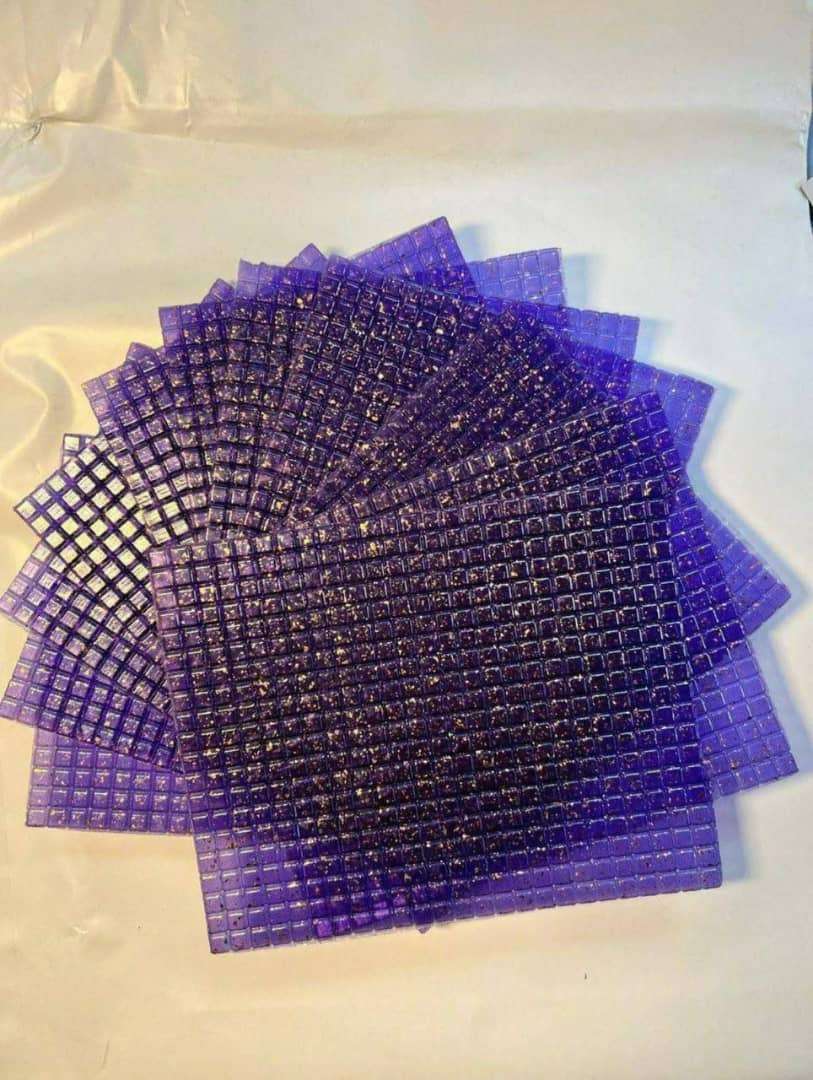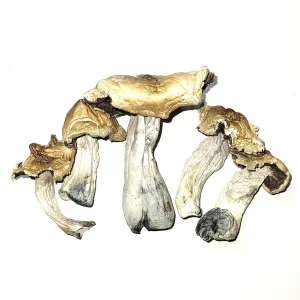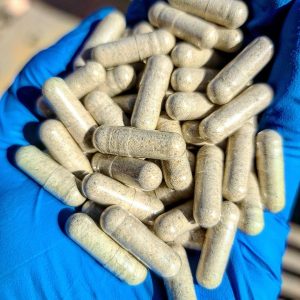LSD (lysergic acid diethylamide) has been virtually unchanged since it first entered the public sphere. People are still using the same LSD-soaked blotter papers Timothy Leary was using back in the early days of the 60s counterculture. Lsd Gel Tabs
But times are changing, and new technologies are being implemented to pack more LSD in a single tab. LSD gel tabs are a new, innovative method of preparing LSD that offers several key advantages over conventional blotter paper.
GET THE BEST LSD GEL TABS ONLINE
Gel tabs can hold up to three times as much of the active ingredient as blotters and offer a significantly longer shelf-life.
Here, we’ll explore what LSD gel tabs are, what makes them better than conventional blotters, and why we believe they’ll become the standard for LSD in the coming years.
What Are LSD Gel Tabs?
LSD gel tabs look like conventional LSD blotters, but instead of paper, they’re made of a thin LSD-infused gelatin square.
They look just like little pieces of Jell-O. Sometimes they’re colored or made to look more decorative with cut designs or gold flakes; other times, they’re manufactured with unique shapes and designs to make them stand out.
LSD gel tabs contain a single dose of LSD. They’re used the same way as conventional blotter papers. Users place a single tab under the tongue where it’s absorbed through a network of tiny capillaries lining the base of the tongue.
How To Make LSD Gel Tabs ?
LSD gel tabs are made by combining liquid LSD, gelatin, and water. Once mixed and allowed to set, the gelatin hardens slightly to form a gel. The entire square is then cut into individual doses.
The amount of LSD in a gel tab can vary greatly depending on how much liquid LSD is used to make the gel sheet and how large the squares are cut.
Gel tabs hold up to three times as much LSD as conventional blotter paper, but they usually contain somewhere between 100 and 200 mcg per tab.
How To Take LSD Gel Tabs ?
The most common way people use LSD gel tabs is to hold it under the tongue for about ten minutes and then swallow whatever is left.
Alternatively, you can just eat the tab as-is, but this may not provide as much efficiency with the dose as you’d get from holding the tab under your tongue.
Differences Between LSD Blotters And LSD Gel Tabs ?
The only difference between LSD gel tabs and LSD blotters (AKA “a tab of acid”) is that gel tabs use a gelatin base to contain the LSD, while blotters use a special kind of absorbent paper (called blotter paper).
Gel tabs are the new generation of LSD administration. They last longer in storage, can hold more LSD per 1/4 inch square and kicks in about 50% faster than conventional blotters.
LSD Blotters vs. LSD Gel Tabs
How Are Gel Tabs More Stronger Than Blotters ?
While the LSD contained within blotters and gel tabs is the same, the capacity to hold more LSD can technically make gel tabs more powerful. However, this is only true if the gel tab actually contains more LSD.
Most manufacturers will still include the same dosage range for gels as they do blotters. This is because the common dose is already just right for most people. There’s not really a need to make the tabs stronger when it’s just as easy to take two tabs for a stronger dose.
Are Gel Tabs Thesame As Blotters ?
Yes, the active ingredient is the same for both the conventional blotter papers and modern gel tabs. Both forms contain concentrated LSD.
The timeline of effects can vary, but the overall experience will be virtually identical.
Gel tabs also tend to kick in more quickly than blotters, so you might have a slightly more intense come-up or peak effect, although most users likely won’t notice a difference.
Additionally, gel tabs can hold more LSD and therefore tend to provide a stronger effect profile.
How Much LSD Do Gel Tabs Contain?
The precise dose contained within a single LSD gel tab varies wildly — from 40 micrograms up to around 500 mcg.
The exact dose depends on how much liquid LSD was used to create the entire gel sheet and how large the gel tabs were cut.
The standard dose for a gel tab is between 100 and 150 micrograms. Even though gels can hold more LSD per 1/4 inch square, the ideal dose is around the 100 to 150 mcg mark, so most manufacturers stick within this range.
It’s impossible to confirm exactly how much LSD is in your gel tabs unless you have a lab test the tab for you. As such, it’s wise to limit yourself to just one tab when using a new batch for the first time — regardless of how experienced you are with using LSD.
How Long Do LSD Gel Tabs Take to Kick In?
One difference you’re likely to notice when using gel tabs is that the effects kick in a few minutes faster than blotters.
LSD gel tabs dissolve rapidly under your tongue and allow the LSD to enter directly into your bloodstream. Blotters take more time because the paper itself doesn’t dissolve. Instead, the active LSD is diffused out of the paper and into the saliva before passing across the capillaries underneath the tongue.
In most cases, LSD gel tabs will begin to start delivering effects within 15 to 20 minutes. Some users may notice a longer period of up to an hour, especially if they swallow the tab instead of letting it dissolve.
LSD Gel Tabs Effects
The standard LSD trip lasts between 6 and 10 hours, with most users feeling back to normal within 10 to 12 hours. This timeline is the same for LSD gel tabs, blotters, and liquid LSD.
LSD gel tabs have a reputation of lasting longer, but there are no official studies to back this up, and the anecdotal evidence is inconclusive. Some find it lasts longer; others notice no difference at all.
If your gel tab contains the same as a standard blotter, there should be no noticeable difference in trip length. However, with gel tabs that contain higher doses, you should expect the trip to last longer than you might be used to.
Can One Microdose With LSD Gel Tabs?
Yes, you can absolutely microdose with LSD gel tabs.
The process for doing so is the same as it is with blotter paper. You can use a sharp knife or razor blade to cut a single gel tab into as many smaller pieces as you want. The easiest division is to cut the gel tab into about 9 smaller squares.
How Long Do LSD Gel Tabs Last ?
One of the main advantages of LSD gel tabs is the long shelf-life. The gelatin consistency of the tab locks the LSD safely inside and protects it from exposure to oxygen, and buffers it from exposure to heat and UV light. All three of these factors lead to faster degradation of LSD blotters.
While it’s unclear exactly how long LSD gel tabs last, it’s thought to be in the ballpark of 3–6 years if stored correctly. Compare this to blotters which are only expected to remain viable for up to 3 years in storage (usually closer to 1.5 years).
All forms of LSD will lose potency over time, especially if they aren’t stored properly, and LSD gel tabs are no exception. Knowing how to store LSD properly will help you maintain its potency long-term.
Generally speaking, gel tabs should be wrapped carefully with tin foil and kept in an airtight container. Keeping the container in the fridge will extend the shelf life even further. Never allow your LSD to be subjected to high heat or direct sunlight for more than a few minutes.
What Are the Different to LSD ?
LSD is just one of many compounds in the lysergamide family of drugs. It’s the most popular, by far, but it isn’t even the most potent of the group.
As time goes on and more people get interest in using psychedelics for the purposes of self-growth, healing, and discovery, alternative options are becoming more common in the marketplace.
The best LSD alternatives include LSZ, 1P-LSD, ETH-LAD, AL-LAD, PRO-LAD, and ALD-52.
While it isn’t common to see them in gel tab form quite yet, we expect to see all of these compounds available in gel tabs in the coming years.
SAFETY OF LSD GEL TABS
LSD gel tabs are no more dangerous than blotter paper. In fact, they both contain the same active ingredient — LSD. The only difference is the vector used to deliver that LSD to the body.
Blotter paper and gel tabs will affect you in the same way, if they’re dose equally. Gel tabs and blotters can theoretically hold about three times as much LSD as blotters — but most manufacturers stick to the tried and true dose range of 100 – 150 mcg per square.
Where gel tabs truly shine is in their shelf-life — which is thought to be at least double what you can expect from conventional blotter squares.
In case you’re in a hurry, below is a brief breakdown of how to store LSD properly:
- Store blotter paper tightly in tinfoil, seal in an air-tight container, and place in the freezer for long-term storage.
- Store liquid LSD, in a glass bottle wrapped in a protective material and leave in the freezer or fridge.
- Store LSD sugar cubes in an air-tight container and put them in the fridge or freezer.
- Store LSD microdots the same way as blotter paper.
Can Gel Tabs Lose Potency ?
Yes, LSD will become less potent over time.
The rate of deterioration will depend on how it’s store. Heat, humidity, and UV light will all cause LSD to break down more quickly.
Even if LSD is store in perfect conditions, it will eventually break down and become less potent.
How Long Does LSD Last? (Shelf-Life of Acid)
LSD can degrade significantly in as little as a few days, or it can last and retain its potency for 2 or 3 years.
After 3 years, the acid won’t go bad, it just won’t be as potent. By the 5-year mark, it’s unlikely for a single tab of acid to have much effect. But two or three could still obtain enough of the active ingredient for a powerful acid trip.
If stored incorrectly (not in an airtight container, in a pocket or wallet, etc.). But don’t expect your acid to last more than about 2 or 3 months before the potency drops off enough to no longer feel it.
If your acid is expose to extend periods of heat or light — such as leaving it in your hot car for the day. It’s likely the acid will already have degraded enough to no longer remain active.
At room temperature with no precautions taken to protect the acid:
- Blotter paper will usually retain its potency for 4-6 weeks
- Liquid LSD in a clear dropper may only last about a week
- Microdots will often retain potency for 4-6 weeks
- Sugar cubes naturally resist moisture and can last about 6-8 weeks or more
These timelines are base on the acid being expose to UV light, heat, moisture, and ambient air.
- Blotter paper to last for 2-3 years in the freezer
- Liquid LSD to last for 1-2 years in the freezer
- Microdots to last for 2-3 years in the freezer
- Sugar cubes to last for 1–3 years in the freezer
Can One Take Old LSD ?
Acid doesn’t go bad when it expires. It’s not going to make you sick or cause any new adverse reactions — it just doesn’t work.
It’s safe to take old acid, but be careful not to take too much, thinking it’s no longer active. This is the most dangerous aspect of using old acid.
Follow the same safety protocols as new acid. Take one dose and wait a full hour and a half to assess whether it’s working or not. Be patient. If it isn’t working by then, take another half and repeat.
Don’t assume the acid isn’t working because it’s old and drop numerous tabs at once.
How To Store LSD Gel Tabs ?
The best storage method for your LSD depends on the form of acid you’re looking to protect.
Blotter paper is the most common delivery method for LSD. But it can degrade in a few months or even weeks if not stored appropriately.
First, wrap your tabs tightly in tinfoil. This will help protect them from UV light and limit the amount of moisture that can interact with the acid.
Next, place your wrapped tabs in an air-tight container and seal it. This will help keep your tabs safe from the outside air. A Ziploc freezer bag or air-tight Tupperware container will suffice.
Next, place your container in the fridge for short-term storage or freezer for long-term storage to prevent degradation from heat.
This method of storage should keep your LSD potent for years if done correctly. Just make sure to let the container come down to room temperature before opening it. Breaking the air-tight seal too early can cause condensation to form, which can damage your LSD.










